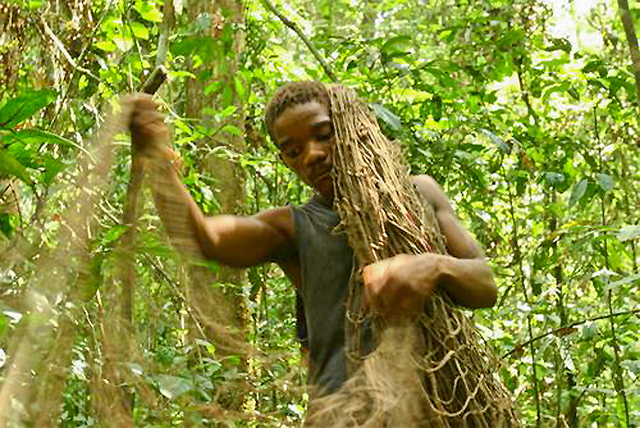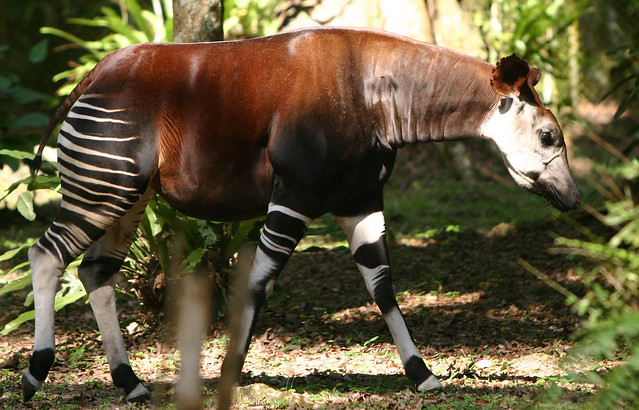The Okapi Conservation Project loaded a news story into its website recently describing the interrelationships between the okapis and the Mbuti people. They have shared their lives in the Ituri Forest for 40,000 years. The organization now recognizes that the Mbuti should have a special management relationship to the okapis, a species of forest giraffe. One of the goals of the organization is to create more opportunities for the Mbuti to become involved in Okapi research and management.

When this new approach was introduced to the Mbuti not long ago, they quickly agreed. They soon discovered an okapi mother and her calf about four km. from the village of Epulu, an important community next to the Okapi Wildlife Reserve.
The article points out that harming okapis and chimpanzees is forbidden in Mbuti culture: they believe the animals embody forest spirits. Hence, they think they must live in harmony with one another and contribute to projects that will help protect the animals.
The approximately 5000 Mbuti who live within the bounds of the Okapi Reserve have been particularly involved with the recent celebration of World Okapi Day. Also, they speak at groundbreaking events for new buildings being built in the reserve and they assist patrolling rangers. The Okapi Dispensary has recently been equipped with beds so Mbuti can sleep there, a recognition of the importance of their culture in the reserve.

In sum, the organization is now fully aware of the value of including the Mbuti in management efforts for the okapi. After all, the forest people understand the forest ecosystem and can contribute immeasurable skills to management programs. Three Mbuti began employment as forest rangers in 2018.
The discovery of the Okapi mother and her calf has led to extensive observations of the pair by the Mbuti. They have tracked the two, collected samples of their diet and their stool, and recorded the hoof prints of the mother and her calf. They developed an ingenious method for recording the hoof prints by outlining them with tough grasses.
The article expresses hope that the information the Mbuti will be able to provide to the staff at the Okapi Conservation Project, particularly about the relations between a mother and her offspring, will prove to be useful. The staff plans to set up camera traps and teach the Mbuti how to service them. They also want to teach them how to make plaster casts of hoof prints in order to gather more accurate data on the growth of the calf.
In case the links in the Okapi Conservation Project website are not working correctly, this interesting article on the Mbuti and their relationship to the charismatic forest animals can easily be found by doing a Google search for the title of the news article, “Mbuti Pygmies Assist with Monitoring Okapi.”